wrestling / Columns
The Magnificent Seven: The Top 7 Blown Gimmicks
Consider Irwin R. Schyster (IRS). In terms of generating heat, it makes complete sense that the physical manifestation of the Internal Revenue Service would be a reliably hate-able character. Moreover, there’s a reasonable internal logic to such a character wearing suspenders and a tie to the ring, and that his foreign object accessory would be a briefcase. All logical enough.
But the thing is, IRS could never be a world champion. Mike Rotundo, who played the character had the in-ring skils and mic game that he could have conceivably made the main event. But IRS was too much of a caricature and a cartoon for fans to ever buy him as a top guy in a national promotion. In fact, it’s a credit to Rotundo that the character survived as a viable mid-card threat for as long as it did.
Similar ceilings applied to characters like Skinner, Repo Man, The Mountie, and Max Moon. Each of these characters was portrayed by a talented professional wrestler. None of these characters was ever destined for any higher altitude than a cup of coffee with the Intercontinental Championship.
On the flip side, there were gimmicks with potential, applied to performers who couldn’t get to the next level. Consider Nailz—a vicious ex-convict big man who may not have had Hall of Famer written all over him, but whose character could have flirted with the main event, were it not for the unfortunate reality that the wrestler beneath the orange jumpsuit simply didn’t have the chops.
This week, I’m taking a look at some seemingly perfect storms—gimmicks that could have risen higher or lasted longer, applied to performers who I feel could have taken that gimmick to the next level.
After I had finalized my list, I realized that these characters skewed mystical or fantastical. Call it a personal bias. Call it a thin line between cartoon-y and potentially extraordinary. Regardless, these are characters who I felt had underrealized potential.
(Credit for the idea of this countdown goes to a 411mania reader who also goes by Mike; I didn’t stick to the “recent” blown gimmicks he suggested, but the overall concept still came from his comment.)
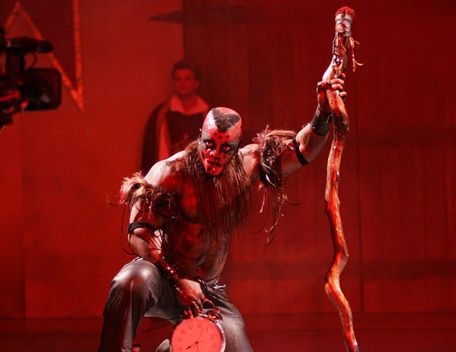
#7. The Boogeyman
I remember the vignettes that introduced The Boogeyman. I recall watching them and thinking that A) this guy’s character was debuting ten-to-fifteen years too late to really fit into the WWE landscape and B) he was going to be a (literal) monster heel.
WWE seemed to be all too aware of the expectations and flipped the script. The Boogeyman debuted in 2004 as a face, and used his funky walk and his worm-eating antics to creep out all manner of heels, quickly becoming a parody of the 1990s heels he, at first blush, seemed to emulate.
I won’t claim that The Boogeyman should have been a long-term megastar. He got into the wrestling game too late in life (almost forty) and never really demonstrated enough skill in the ring to justify a sustained upper card, much less main event role. Just the same, he walked a strange line of beating fringe main event guys like JBL and Booker T, while there remained a clear main event line that The Boogeyman himself would never cross.
My argument: the character should have, at least initially, been cast as the heel he seemed predisposed to be, and legitimately terrorized the mid-card faces for at least half a year (and ideally a year or more) before he turned semi-comedic face to wind up the character’s run. Particularly in an era when WWE was re-embracing family friendly entertainment, this character could have been a suitably frightening presence to scare the kids, and a satisfying foe for a rising star like John Cena to have vanquished.
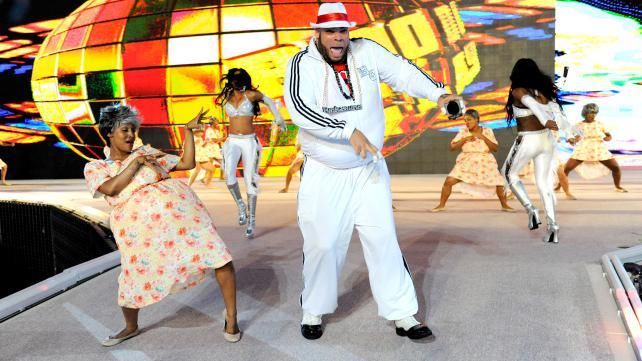
#6. The Funkasaurus
Brodus Clay was a near-four-hundred-pound, super-mobile powerhouse of a young wrestler who debuted via NXT and followed up that run by serving as a second to Alberto Del Rio on the main roster. He vanished for a period of months, and then resurfaced in a new persona—The Funkasaurus.
Plenty of folks found it absolutely absurd that WWE would transform a monster heel into a cartoonish dancing big man. This was a guy who had the tools to be a modern-day King Kong Bundy. Instead, WWE seemed intent on making him more like a modern-day Rikishi, replacing Too Cool with The Funkadactyls—a bit less of a threat in the ring, but, to be fair, objectively better dancers.
When the dust settled, and the character started coming into his own, I dug him.
No, Clay wasn’t about to put on five-star matches, and he wasn’t the most nuanced of characters, but as an upper mid-card attraction, and supersized enforcer to have the backs of smaller faces, I thought he could offer his share of memorable moments before an eventual heel turn when he might have realized all of his monster potential.
WWE seemed to really be behind Clay, with endorsements including a Momma-themed dance segment at WrestleMania 28. But then his stock slid. Clay got punked out decisively by The Big Show, which more or less crippled his big man cred and planted him firmly in the mid-card shuffle. From there, he was positioned in a tag team with Tensai, in which the twosome ostensibly played the same character—funny big men with a propensity for dance. By the time Clay did turn heel, he was a lower mid-card fixture and, in his limited time there, never got the opportunity to see his stock rise again.
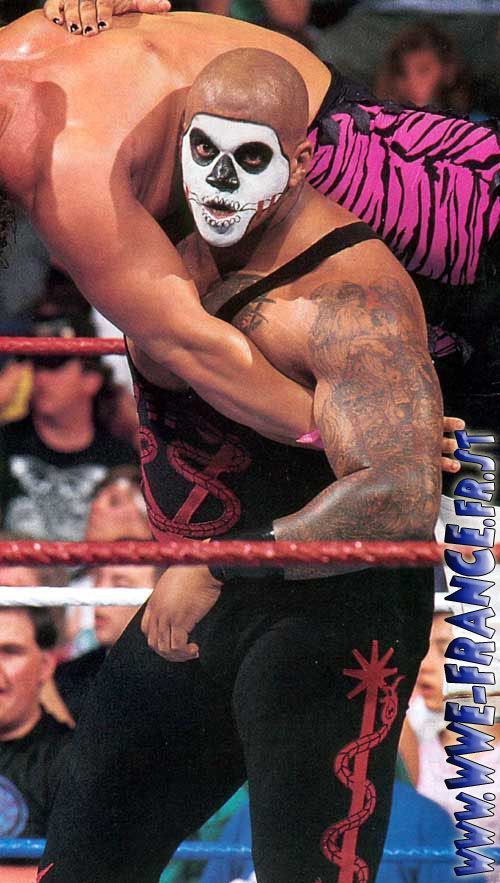
#5. Papa Shango
I’m sure some folks will disagree with this one, as WWE itself has not been kind in remembering Papa Shango, the voodoo practicioner who menaced The Ultimate Warrior and co. in 1992. The WWF never seemed to fully lock down if he was a true menace or just another gimmick player at the time, though, which cut short what could have been a pretty special mystical heel character.
To establish my point of view, I was eight years old with Papa Shango emerged in the WWF landscape. And even though I had been raised smark, and knew wrestling was fixed and largely scripted, this dude still terrified me.
In retrospect, I’ll openly concede that the WWF should have gone less hokey and more evil with Shango’s curses and spells, but I’ll also argue that that was a very tricky line to navigate in the WWF landscape of that day. My contention—had Shango gotten a sustained mid-card push, going undefeated over the Jim Duggans, El Matadors, and Virgils of the day, then the WWF could have gotten at least two substantial upper card programs out of him via some permutation of opponents that might have included The Ultimate Warrior, The Undertaker, Randy Savage, and Bret Hart.
Charles Wright, the performer cast in the gimmick, owns some responsibility for its failure, as I don’t know that management ever really forgave him for missing his cue and blowing the timing on interfering in the WrestleMania 8 main event (when he was supposed to break up Hogan’s pin of Sid Justice but showed up late, so Justice had to do the unthinkable and kick out after getting hit with a leg drop). Indeed, save for one world title shot against new champion Bret Hart (by which time Shango was more cannon fodder than legit threat) Shango settled into mid-card obscurity from there where he would fester until the summer of 1993, before Wright disappeared and returned a year and half later, rebranded as Kama, the Supreme Fighting Machine.
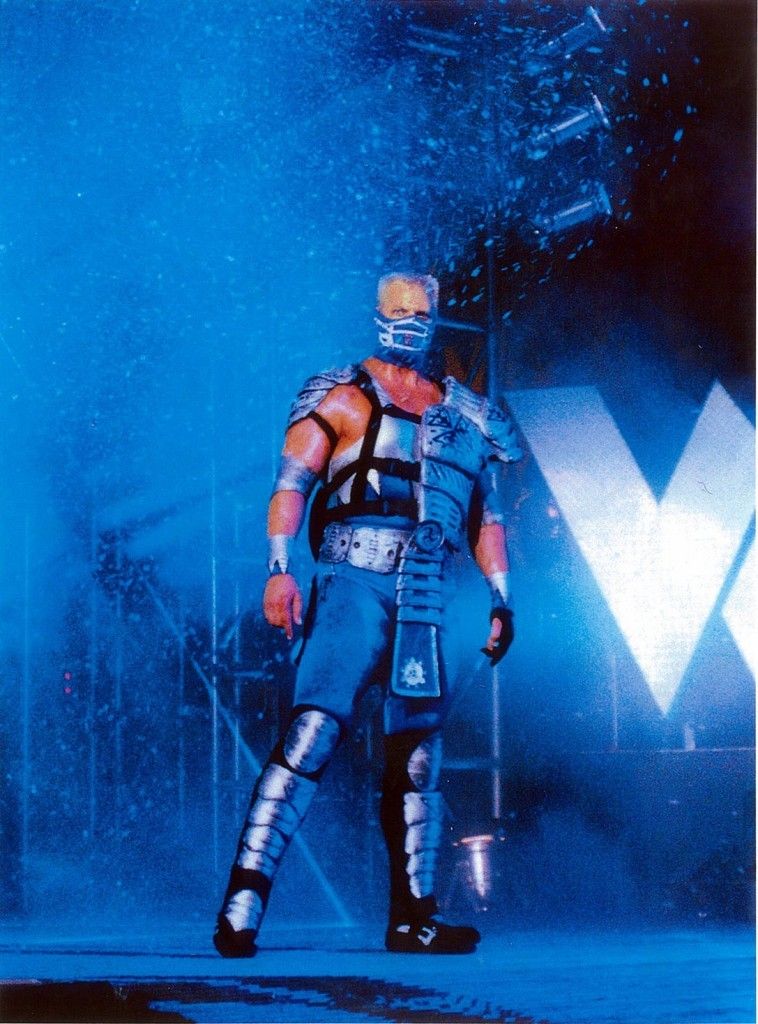
#4. Glacier
This list has skewed heavily toward the WWF/WWE, but I certainly didn’t forget about WCW. The thing is that WCW alternately steered clear of well-defined gimmicks in favor of marketing its guys as–gasp–professional wrestlers without avocations or went whole-hog with particularly awful gimmicks that couldn’t really be blown because they weren’t in any way good to begin with.
(Side note: I came very close to including The Hollywood Blonds in this countdown, but ended up deciding that that wasn’t a gimmick so much as Steve Austin and Brian Pillman getting to show more personality and better find their voices as wrestlers—that said, I do understand arguments to the contrary, and please know they were under consideration and WCW did blow it with that tandem.)
So we arrive at Glacier. For nearly half of 1996, WCW hyped its off-beat new star via vignettes, before he finally debuted in the fall. Glacier was the victim of poor timing—the potential apex of super-hero-esque booking whose intended arrival happened to coincide with the NWO angle catching fire, and sparking a more realistic era in WCW’s booking (and the overarching pro wrestling landscape). All of a sudden, Glacier’s elaborate entrance, fancy accessories, and theatrical movements felt oddly out of place. I don’t know that Glacier ever would have been a legit main event act, but I feel that if you tweak the timing he easily could have had a sustained upper mid-card run. Moreover, had WCW responded to the times by tweaking the character—making him a little less of a Mortal Kombat knock off and a little more of a serious competitor who had carefully blended martial arts and pro wrestling tactics to his maximum advantage—he still had the potential to thrive as a cutting edge character who would eventually challenge or join the NWO.
In reality, though, Glacier fizzled. WCW tried to keep him in an all but alternate universe feuding with similarly absurdist characters, Mortis and Wrath, but by the time a year had passed it become abundantly clear he’d never emerge from the middle of the pack in WCW, promptly squashed by guys WCW was more invested in (including but not limited to Goldberg, Buff Bagwell, and Lex Luger).
Glacier marked a rare example of WCW creative being truly, well, creative in character concept. Just the same, this persona goes down as a shining example of short-attention-span booking, as the momentum of Glacier’s act cooled before the man ever stepped in the ring.
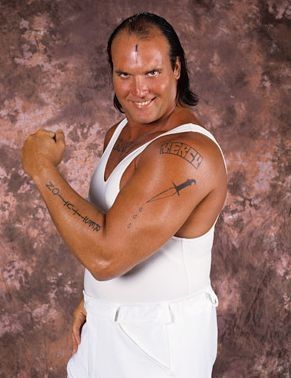
#3. Waylon Mercy
Dan Spivey was a bit of a supersized journeyman in the early stages of his career, teaming with the likes of Mike Rotundo and becoming something of a Hulk Hogan-lite act in the mid 1980s WWF, before he migrated to WCW for a heel run when he became best known as Sid Vicious’s tag team partner as the Skyscrapers (the team also later featured “Mean” Mark Callous—the would-be Undertaker).
From my own youth, I best remember Spivey under the guise of Waylon Mercy—an unhinged southern gentlemen who wore Hawaiian shirts and white linen pants to the ring, and insisted on shaking hands with referees and opponents before a match, after which point he unleashed his mean streak and pummeled faces mercilessly en route to his sleeperhold finisher.
Mercy’s nice-guy intro and outro, paired with his sadistic tendencies between the bells made him something of a precursor for the Mankind character. Moreover, the twinge of insanity and an almost cult-leader persona offered shades of the Bray Wyatt Gimmick that would come nearly twenty years later.
But after Waylon Mercy had made his way through a series of squashes against jobbers, and picked up a few victories at the lower tier of the face roster, he graduated to the facing top talents and never really picked up a meaningful win or particularly memorable moment opposite, Diesel, Bret Hart, or Razor Ramon. Thus, his momentum stopped cold and he slid right down the card.
It’s difficult to hold the WWF fully responsible for squandering Mercy’s potential, given that Spivey ended up retiring due to injuries less than a year into the run. Just the same, I wonder if the man may have braved a longer in-ring career had the character gotten more of a sustained opportunity, or, barring that, if the WWF might have capitalized on his top-shelf character work to create a creepy new manager persona. As it stands, Waylon Mercy is all but lost to the sands of time, a forgotten character from the largely forgotten year of 1995, when the WWF was certainly not at its best.
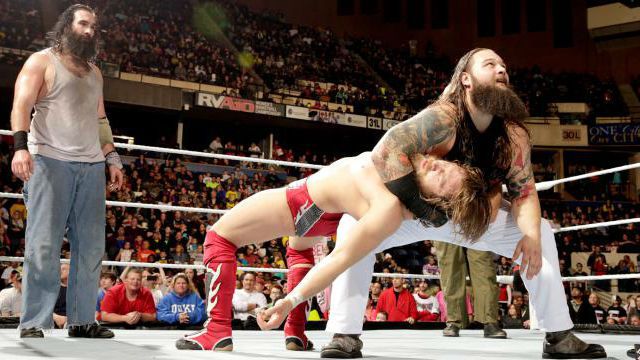
#2. Bray Wyatt
The good news about this number two entry is that Bray Wyatt still has plenty of miles on his career odometer, and WWE still can right the ship and make the most of this character.
The bad news is that after a white hot start on the main roster, Wyatt has seemed largely directionless, meandering from upper mid-card feud to upper mid-card feud with little discernible purpose or evolution.
When the former Husky Haris evolved into the evil Bray Wyatt persona, he looked to be the definitive case for WWE’s NXT developmental system working. It offered a young guy with a ton of potential the opportunity to hone his creative work and develop a truly unique act. Moreover his introductory vignettes and early work on the main roster suggested big things for him. While his program with Kane didn’t exactly produce mat classics, it told a reasonable story. Moreover, his program with Daniel Bryan gave Wyatt the opportunity to both put on a very good in-ring performance (Royal Rumble 2014) and suggest character development when he tried to lure Bryan into his cult.
But then Wyatt ran into the brick wall of John Cena. Despite picking up one win with an assist from a possessed child, Wyatt decisively lost this war. While he would move on from there to more or less win his feuds with Chris Jericho and Dean Ambrose, both rivalries proved remarkably un-memorable, and only paved the way for Wyatt to drop a match to The Undertaker at the following WrestleMania.
Wyatt is, on paper, probably the single most interesting character WWE has created in the last five years, but it’s stunning that after two years he is still treading water, picking fights with similar caliber stars, seemingly at random.
Whether it’s a matter of reassembling his family, putting Wyatt in an earnest title hunt, or giving him a face turn (hopefully with a particularly dastardly heel turn to follow) something needs to happen for Wyatt to be relevant. The man has all the tools. Hopefully creative can catch up to him.
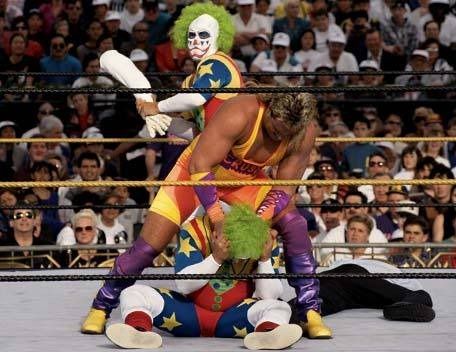
#1. Doink the Clown
Once again, I’ll need to contextualize a pick via the lens of my youth. I was nine years old when Doink the Clown started picking on children in WWF audiences, when he beat Crush with a prosthetic arm, and when Doink aligned himself with a look-alike clown to get the better of the big Hawaiian at WrestleMania 9.
And I was sold.
With the benefit of another two decades of life experience, I can understand that Doink presented a hokier image than the WWF necessarily wanted for itself, and that were the character have progressed on such a dark trajectory he may have grown too creepy for the children’s fanbase the company still catered to.
All that said, Doink, as originally portrayed by Matt Borne, was special. He was a crazed heel who looked like no one else on the roster and who, given the benefit of the doubt, was actually introducing elements of hardcore before hardcore was cool given his innovative weaponry.
It probably wouldn’t have made sense for Doink to ever win a world title, but permitted a sustained heel push, I do feel he could have been an intriguing and worthy foil for the mid-1990s Undertaker. Moreover, had the character survived into the Attitude Era, can you imagine the potential of a legitimately evil clown, playing increasingly violent and sadistic tricks on the faces of the day? I’m stretching, but I’d venture to say that an unholy alliance between Doink and Mr. McMahon might have captured some similar magic to McMahon’s partnership with Mankind (and the potential for a Foley-Doink feud in which each man was at his most crazed and most violent could have been electric).
The WWF backed off from all of this, though, replacing Borne with Steve Lombardi, transitioning from horror music to pure carnie fun, and pairing him with midget Dink to form what was arguably the single most cartoonish jobber to the stars of all time.
I contend that Doink could have been a legend. But all the WWF wanted was the clown.
Which gimmicks would you add to the countdown? Let us know what you think in the comments section.
Read more from Mike Chin at his website and follow him on Twitter @miketchin.
More Trending Stories
- Rob Van Dam Recalls Rip Rogers Bullying Him During a Match
- Eric Bischoff On AEW’s Lack Of Build For Bryan Danielson vs. Nigel McGuinness
- Vince McMahon Wanted to Broadcast Stephanie & Triple H’s Wedding on PPV, Stephanie Refused
- Eric Bischoff Reveals How Ted Turner Reacted to WWE’s Infamous ‘Billionaire Ted’ Skits







